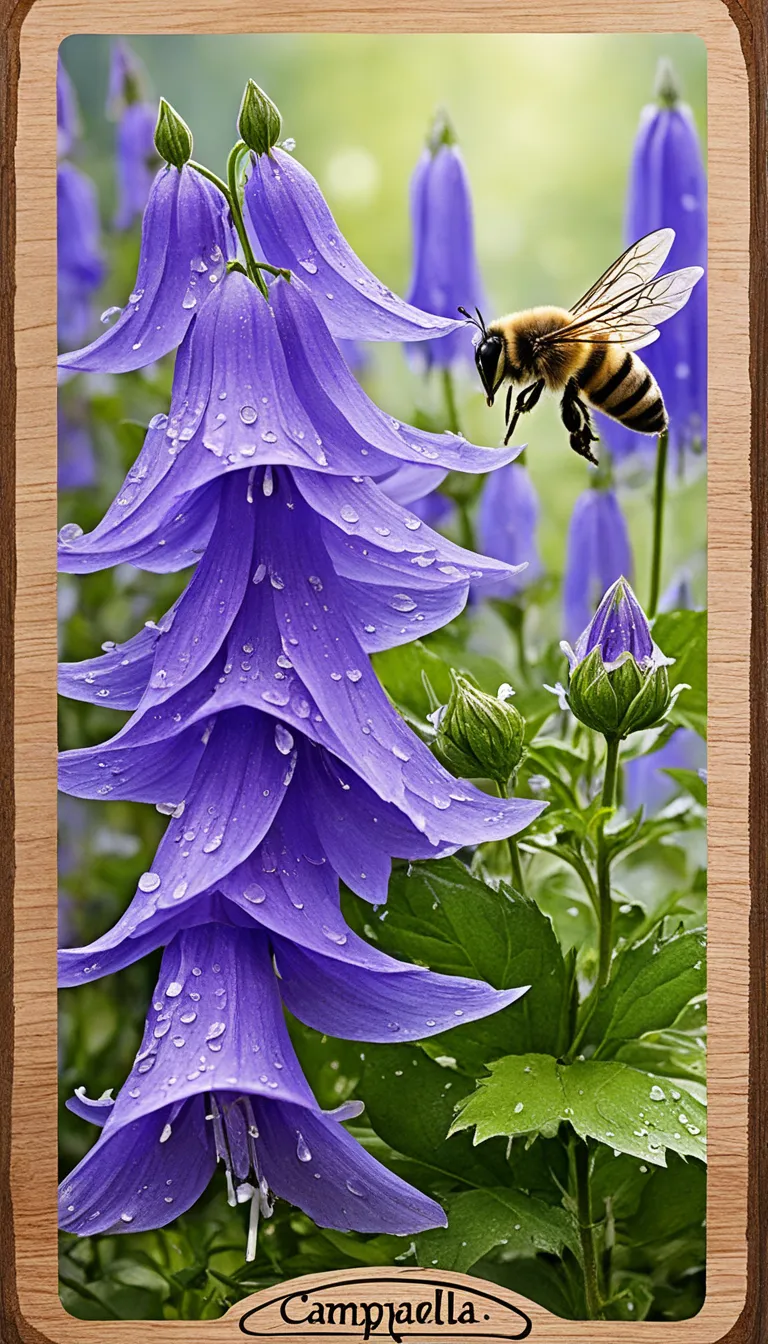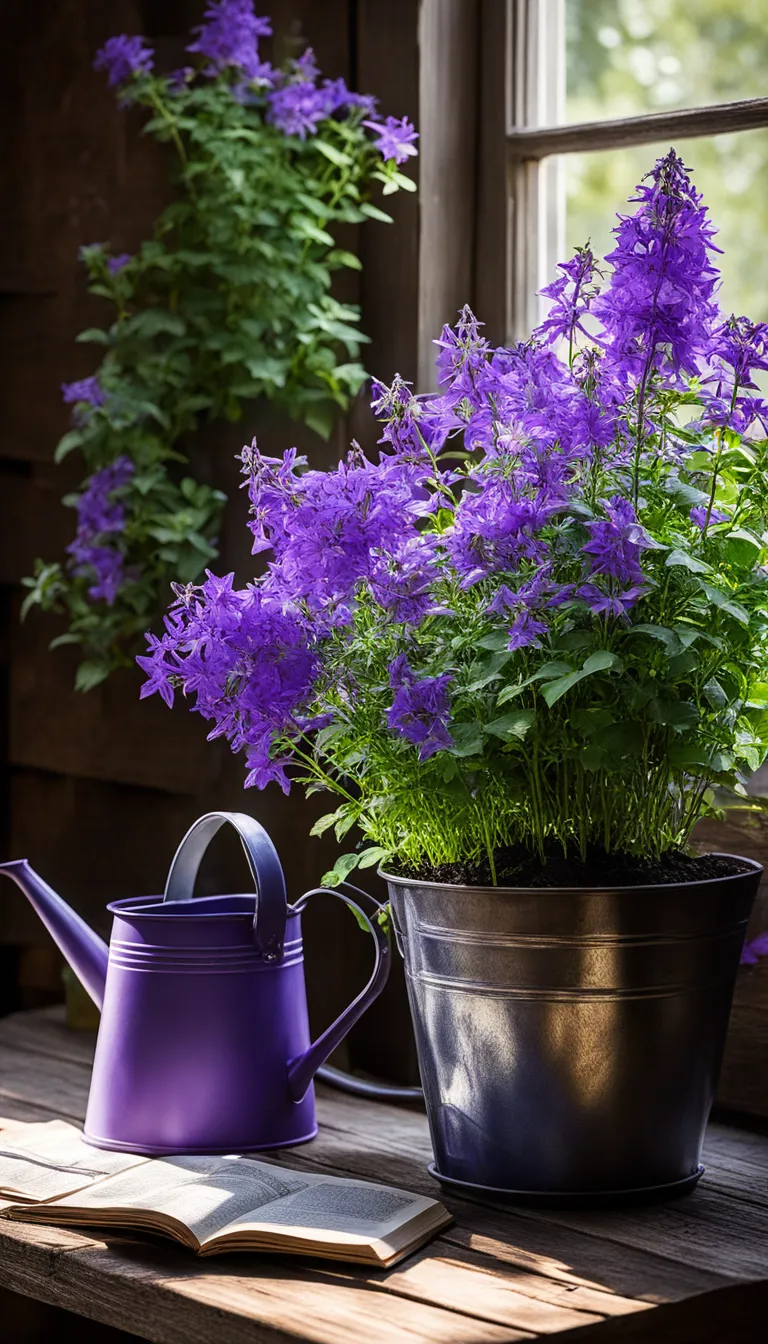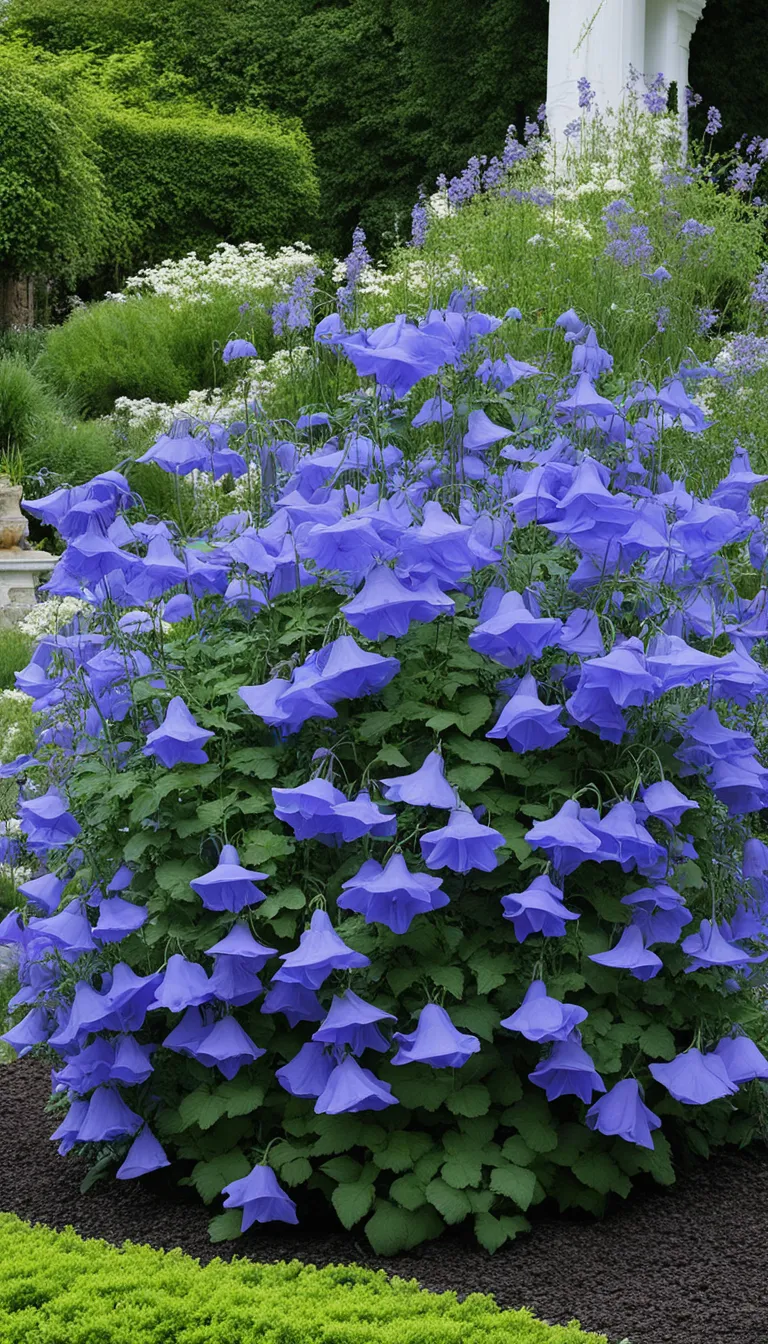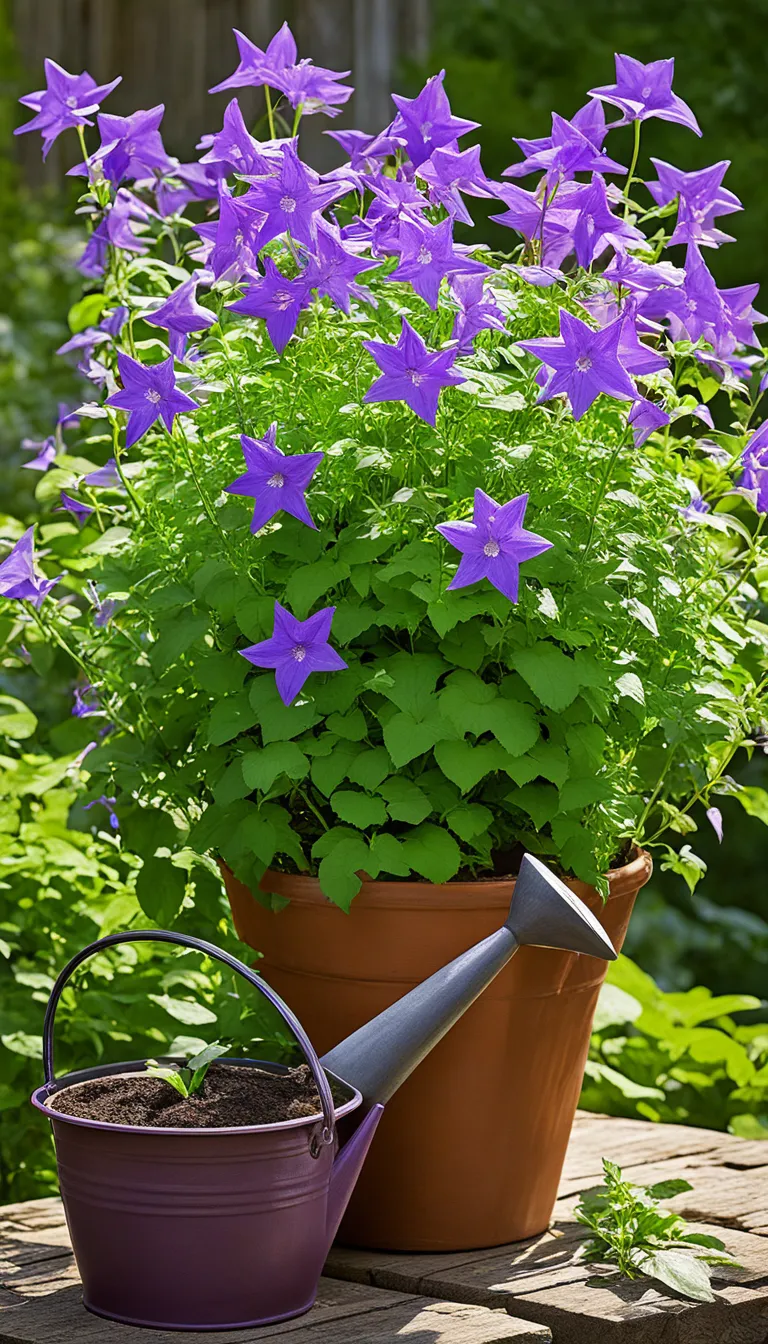Have you ever felt the surprise of stumbling upon a Campanula in full bloom? The explosion of color and the delicate bell shapes are truly a sight to behold! In this guide, we’ll dive into the enchanting world of Campanula, a group of plants that capture the heart of many with their whimsical charm and vibrant presence in the garden.
Campanula, commonly known as bellflower, is a versatile genus that includes everything from petite alpine species to towering perennials. These plants are not just beautiful; they are also robust and can adapt to a variety of climates, making them a favorite among both novice and experienced gardeners. But what’s the secret behind their allure? Is it the way their blooms sway gently in the breeze, or perhaps the array of colors they come in? Let’s find out together.
When it comes to planting and nurturing these floral gems, there’s a sense of excitement akin to setting off a firework display in your own backyard. Each variety of Campanula brings its own unique personality to the show, creating a tapestry of texture and hue that can leave any onlooker in awe. Ready to embark on this journey? Grab your gardening gloves, and let’s get started on transforming your garden into a wonderland of Campanula blooms!

What is Campanula?
Campanula, commonly known as bellflower, is a captivating genus that brings a touch of whimsy and charm to any garden. Have you ever wondered what makes these flowers a gardener’s delight? Well, it’s their starry or bell-shaped blossoms that seem to dance on their stalks with every gentle breeze. These perennial plants are not just a treat for the eyes but are also remarkably hardy, making them perfect for both novice and experienced green thumbs.
Originating from a wide range of habitats, including the cool temperate regions of the Northern Hemisphere, Campanula species have adapted to thrive in various environments. Isn’t it amazing how nature crafts such versatility? This genus comprises over 500 species, each with its unique characteristics. From the towering Campanula latifolia to the ground-hugging Campanula portenschlagiana, there’s a species for every garden nook and cranny.
But what really sets Campanula apart is its symbolism. These flowers are often associated with gratitude, constancy, and everlasting love. Imagine the joy of gifting a bouquet that whispers, ‘Thank you for being in my life’ or planting a patch that symbolizes unending affection. Now, that’s something special, isn’t it?
- Flower Shape: Bell or star-shaped blossoms
- Plant Type: Mostly perennials, with some annuals and biennials
- Symbolism: Gratitude, constancy, everlasting love
- Habitat: From alpine meadows to Mediterranean climates
- Species Count: Over 500 diverse species
In essence, Campanula is not just a plant; it’s a storyteller, a symbol of deep emotions, and a testament to nature’s adaptability. So, are you ready to let the bells of joy ring in your garden with these enchanting flowers?

How to Care for Campanula?
Got a Campanula in your garden and wondering how to make it thrive? Fear not, green thumbs and floral aficionados! Caring for these charming bell-shaped beauties is a breeze if you keep a few key tips in mind. Let’s dive into the essentials of Campanula care, ensuring that your garden is bursting with color and life.
Sunlight: First things first, Campanula loves the sun, but it’s also cool with a bit of shade. Aim for a spot that gets partial to full sunlight, where they can soak up those rays without getting a sunburn. Too much shade, though, and you might find your flowers playing hide and seek.
Watering: When it comes to watering, think of Goldilocks – not too much, not too little, just right. Campanula’s soil should be kept moist, but not waterlogged. Overwatering is a no-go, as it can lead to root rot, and nobody wants that. A good rule of thumb is to water when the top inch of soil feels dry to the touch.
Soil: Speaking of soil, Campanula isn’t too picky, but it does best in well-draining soil. Mix in some organic matter or compost to give it that extra boost of nutrients. A happy plant is a healthy plant, and with the right soil, your Campanula will be grinning from ear to ear.
- Ensure adequate sunlight – partial to full sun is ideal.
- Maintain moist soil – water when the topsoil feels dry.
- Choose well-draining soil – add organic matter to enrich.
- Prune regularly to encourage growth and prevent disease.
- Watch out for pests and treat them promptly if they appear.
Remember, folks, every plant has its own personality, and Campanula is no exception. With a little love and attention, you’ll be rewarded with a floral explosion that’s sure to be the envy of the neighborhood. So, roll up those sleeves and get gardening!

What are the Campanula Varieties?
Have you ever found yourself mesmerized by a sea of starry bell-shaped flowers swaying gently in the breeze? Chances are, you’ve encountered the diverse world of Campanula. Each variety of this enchanting genus brings its own explosion of color and form. Let’s dive into the kaleidoscope of Campanula varieties that could adorn your garden with a touch of magic!
Campanula persicifolia, commonly known as the Peach-leaved Bellflower, is a true garden classic. With its tall spikes of blue or white flowers, it’s a sight to behold! Then there’s the Campanula glomerata, or the Clustered Bellflower, which boasts dense clusters of purple blooms that create a visual punch that’s hard to ignore.
For those who love ground covers, Campanula portenschlagiana—the Dalmatian Bellflower—is a perfect choice. It’s a low-growing dynamo that carpets the ground with violet-blue bells. And let’s not forget the Campanula carpatica, the Carpathian Harebell, with its open, cup-shaped flowers that seem to smile up at the sun.
Here’s a quick list of some popular Campanula varieties:
- Campanula persicifolia – Peach-leaved Bellflower
- Campanula glomerata – Clustered Bellflower
- Campanula portenschlagiana – Dalmatian Bellflower
- Campanula carpatica – Carpathian Harebell
- Campanula latifolia – Giant Bellflower
- Campanula poscharskyana – Serbian Bellflower
- Campanula rotundifolia – Bluebell of Scotland
Each of these varieties not only brings its own unique charm but also its own set of care requirements. So, whether you’re looking to create a surprise burst of color in a shady nook or a full-on explosion of floral delight in a sunny border, there’s a Campanula variety just waiting to transform your garden.





